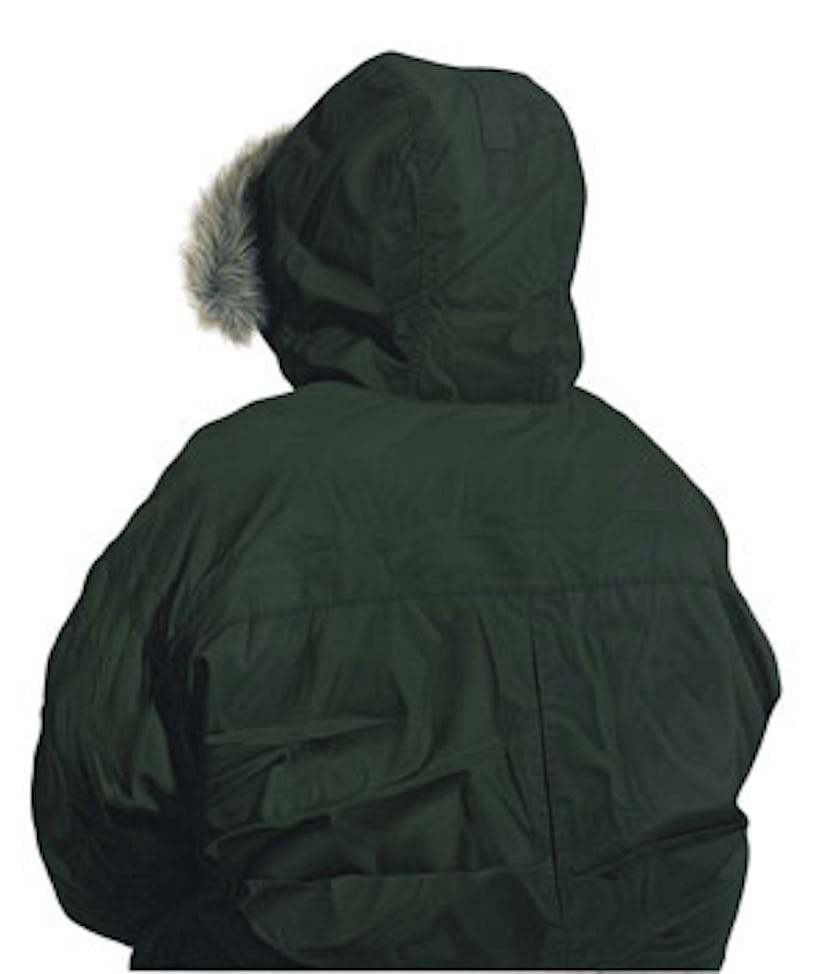Karel Funk
Karel Funk’s hyper-realist portraits are as enigmatic as the urbanites they depict. here, a first look at the Canadian painter’s upcoming New York show.

Anyone who has ever ridden the New York subway at rush hour knows the feeling of being pressed so close to your fellow commuters that you can see their every pore, shaving nick and flaking follicle. To artist Karel Funk, newly arrived in Manhattan from his native Winnipeg, Manitoba, in 2001, that proximity to strangers on a train proved overwhelming at first—then career changing. He’d been toying with suburban angst in his paintings but felt that route was already well traveled by others. In urban voyeurism, however, he knew he had found his ideal subject.
“I was fascinated by how this boundary of personal space completely disappeared on the subway,” Funk recalls by phone from his home in Winnipeg, where he returned in 2003 and works in a studio in the basement of his house. “You could see details of somebody’s ear or neck that you’d never observe just socializing with friends because there’s this boundary we all keep.”
It’s those close encounters with strangers that inspire Funk’s hyper-realist, neo-Renaissance portraits of young urbanites, the latest of which go on view in April at New York’s 303 Gallery. “I wanted to convey that moment when you’re forced to look intimately at the back of a stranger’s head, but I didn’t want there to be any emotional connection,” says Funk, who depicts minute details like an acne scar or a fabric fold with exquisite, microscopic clarity, applying sometimes up to a hundred layers of acrylic to a wood panel. To Carter Foster, curator of drawings at the Whitney Museum of American Art, which owns a Funk, the 38-year-old artist “comes close to [Edward] Hopper in the way his works implicate the viewer as a kind of voyeur.”
Yet even as he allows us to scrutinize his subjects, Funk reveals little of their lives. His paintings are firmly rooted in the history of portraiture, he says, acknowledging his debt to Renaissance masters such as Holbein and Bronzino, with their focus on precise detail and brushwork. And like those artists, he pays great attention to what his subjects wear, seeing the jackets and hoodies he provides them as modern-day armor and shields.
But unlike traditional portraiture, in which the subject typically locks eyes with the viewer and background details provide clues about them, Funk’s subjects face away from us or have their eyes closed, as if they’re unaware of our presence.
“As soon as you see a face—there might be some tension in the eyes or mouth—there’s a story, a feeling,” he says. By obscuring the face or cloaking it altogether as Funk does, “it becomes very hard to find a specific narrative or emotion about that person,” he notes. “My paintings give you very little. There’s nothing there to connect with except for the formal qualities, the texture of skin, hair or clothing, and the questions you’re left with about ‘Who is that person?’”
Growing up in Winnipeg, where his father was an architect and his mother a music teacher, Funk was a die-hard skateboarder as a teen, but at 21 he turned to painting at the University of Manitoba. In New York he earned an M.F.A. at Columbia University, attracting notice straight out of grad school with his critically lauded first solo show, in 2004 at 303 Gallery. So assured was his style, The New York Times critic Roberta Smith wrote at the time, that “it does make you wonder what is left for him to do.”
What he’s done lately is paint women for the first time. He’d stayed away from female subjects, he explains, not wanting to introduce the idea of an emotional or a sexual dynamic between artist and model. But as a result, he says, he had come to be seen as a male painter who paints only men, which introduced another unintended narrative into his work. Painting both genders “makes me a painter who is just looking at people.” He has also moved further into abstraction. One painting shows only a jacket, another a hood. You can still discern the figure beneath them, though just barely. “It feels like you’re looking down on a relief map,” says the artist.
Funk photographs his models in poses against white backgrounds, and later refers to the digital images on his computer screen while he paints, inventing as he goes until, in the home stretch, he ignores the photographs entirely. “At a certain point you have to make it into a painting,” Funk says, “so that it’s speaking by itself.” The works on the pages that follow do just that.
Karel Funk
Untitled #21, 2006, acrylic on panel, 31″ x 27″
Untitled #40 (work in progress), 2010, acrylic on panel, 45″ x 42″
Untitled #39 (work in progress), 2010, acrylic on panel, 60″ x 40″
Untitled #38, 2009, acrylic on panel, 47″ x 47″
Untitled #29, 2008, acrylic on panel, 43 1/2″ x 42″
All artwork courtesy of 303 Gallery, New York